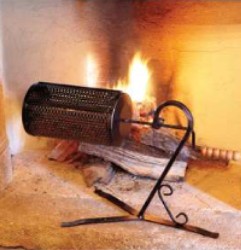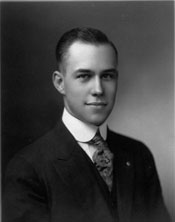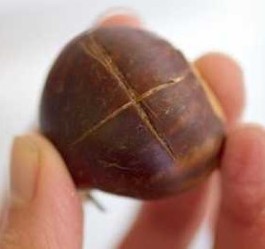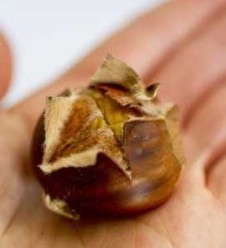MARK TARSES TENANT NEWSLETTER
January, 2011
SHOULD TENANTS BE ALLOWED TO VOTE?
Tenant rights groups across the country are fuming over a proposal by a major Tea Party organization to restrict the right to vote to people who own real estate. Judson Phillips, president of Tea Party Nation, points out that at the time the Constitution was written, tenants were not allowed to vote. He's right about that. When George Washington was president, only white male property owners were allowed to vote. Congress didn't abolish property ownership requirements for voting until 1850. In England, most tenants could not vote until 1918. Congress could take away the right of tenants to vote, and they wouldn't have to amend the Constitution in order to do it. Tenants do not have a Constitutional right to vote. That may sound hard to believe, but it is true. While this proposal seems ridiculous, a lot of Tea Party politicians will soon be taking seats in Congress, and Tea Party Nation is a major player in the Tea Party movement. They organized the much-publicized first national Tea Party convention back in February. See: Tea Party Nation.
MORE USELESS KITCHEN GADGETS.
Last month, I reviewed a number of useless kitchen gadgets. Since then, several people have given me useless kitchen gadgets as gag gifts. One person gave me an egg cuber. Egg cubers have been on the market for decades. An egg cuber works this way - you shell a hot hard boiled egg, put it in the egg cuber, twist on the cover, and put it in your refrigerator. When the egg gets cold, it pops out in a cube. The box describes this device as a 'space saver,' but can you really save space by cubing a hard boiled egg? They sell 'space saver' square watermelons in Japan, but you know, a watermelon takes up considerably more space in your refrigerator than an egg. So, what can you do with a square egg? I suppose that if you had 2 cubed eggs, you could paint dots on them and play dice games with them. They sell egg cubers at Amazon for $6.00.
Egg Cuber.
Iced Tea Machine. Somebody else gave me a iced tea machine. This was not meant to be a gag gift, but for me, an iced tea machine is even more useless than an egg cuber. That's because an iced tea machine takes up a lot of kitchen counter space, and I don't have a lot of kitchen counter space. A lot of companies make iced tea machines, so I suppose there must be a lot of people who either don't know how to make iced tea or who think that making iced tea is difficult. Actually, making iced tea is very easy. Here's the recipe: Pour tea over ice. That's really all there is to it. It ain't rocket science.
Making iced tea from scratch is a lot easier than making iced tea with a machine. I never did get this contraption to work. The instruction booklet said that "you can make a pitcher of iced tea in 12 easy steps." Doesn't that seem like a lot of steps just to make iced tea? I got stuck at Step #9, which was: "Place tea in the infuser." I thought: "What the hell is an infuser and where is it?" I didn't see anything labeled 'infuser'. I took the machine apart looking for the infuser but never found it. Then I put the machine back in its box and gave it to somebody else, like the proverbial fruitcake that keeps getting passed around.
ROASTED CHESTNUTS.
Roasting chestnuts is very easy. There is only one ingredient: chestnuts. You do not need oil, salt, sugar, or anything else. You definitely do not need a chestnut roaster - another useless kitchen gadget. Last week, I was down on Fourth Street where I saw an Italian chestnut roaster in a store window. This thing was huge and cost $200. To roast chestnuts with this device, you fill a metal cage with chestnuts, stick it in your fireplace, and then turn a hand crank continuously until the chestnuts are roasted. Why do people buy things like this?

Here's how to make perfect roasted chestnuts.
1. Preheat your oven to 400 degrees. I roast chestnuts in my toaster oven, and that works just fine.
2. Using a small paring knife with a sharp point at the end, cut a large cross on one side of each chestnut. The cut does not have to be deep. It just has to go though the shell and skin. If you do not cut the chestnuts first, they will explode in your oven, which makes an awful mess.
3. Place the chestnuts in a baking pan with the cut side face up. Do not oil the pan.
4. Roast small chestnuts for 18 minutes. Roast large chestnuts for 22 minutes.
5. Remove the chestnuts from the oven. When they are cool enough to handle, peel off the shell and skin and enjoy! Chestnuts are best eaten warm.GROSSBY NIGHT LIGHT.
This really is a very useful gadget. Whenever I stay in a hotel, I always put one of these night lights into the bathroom outlet as soon as I arrive. Most hotels have windowless bathrooms, and it is often impossible to see anything in them at night.This night light has a number of nice features.
1. It swivels 360 degrees, so you can aim the light in any direction.
2. It has an LED bulb, which uses only 3/10 of 1 watt of electricity. That's almost nothing! And LED bulbs last a very long time.
3. It has a light sensor, so it shuts off in the daytime and automatically goes back on when it gets dark.A Grossby night light sells for $3.50. They are only sold at Ikea stores. Ikea does not sell them on their web site.
THE GERMAN LANGUAGE MYTH.
The myth: After the American Revolution, Congress voted on a bill to make German the official language of the United States, and the bill lost by just one vote.
This myth is widely believed to be true in both the United States and Germany. This story is frequently repeated in newspapers and on television shows just before elections to illustrate how important a single vote can be. However, Congress never considered such a bill. At the time of the American Revolution, about 1/3 of the people living in Pennsylvania could speak German, but in the other 12 colonies, very few people could speak any German at all. If you think about it, it is absurd to imagine that Congress would seriously consider changing the language of the country to one that neither they nor their constituents could speak.
The myth that Congress voted on a bill to change the national language of the United States to German was an invention of the German American Bund. In the 1930s, the Bund, Friends of New Germany, and other Nazi organizations in the United States promoted this myth (and a number of other myths about American history) for propaganda purposes.
WOMEN'S SUFFRAGE.

There are many other popular 'one vote' myths; however, some very significant things really have happened because of one vote. In 1919, Congress passed the 19th Amendment to the Constitution (Women's Suffrage). 36 states had to ratify it before it could become law. There was strong opposition to the amendment in many states. Almost every Southern state voted against ratification. The last state to vote was Tennessee, but supporters of the amendment were one vote short in the Tennessee General Assembly. Just before they voted in 1920, Assemblyman Harry Burn, age 24, received an impassioned letter from his mother, a dedicated suffragette. She told him to "be a good boy" and vote for women's suffrage. Burn opposed the amendment and said he would vote against it, but at the last minute, he switched sides and voted for ratification - simply because his mother told him to. His one vote put ratification over the top, and as a result, women got the vote. (Sounds unbelievable, doesn't it?)
Mark Tarses

